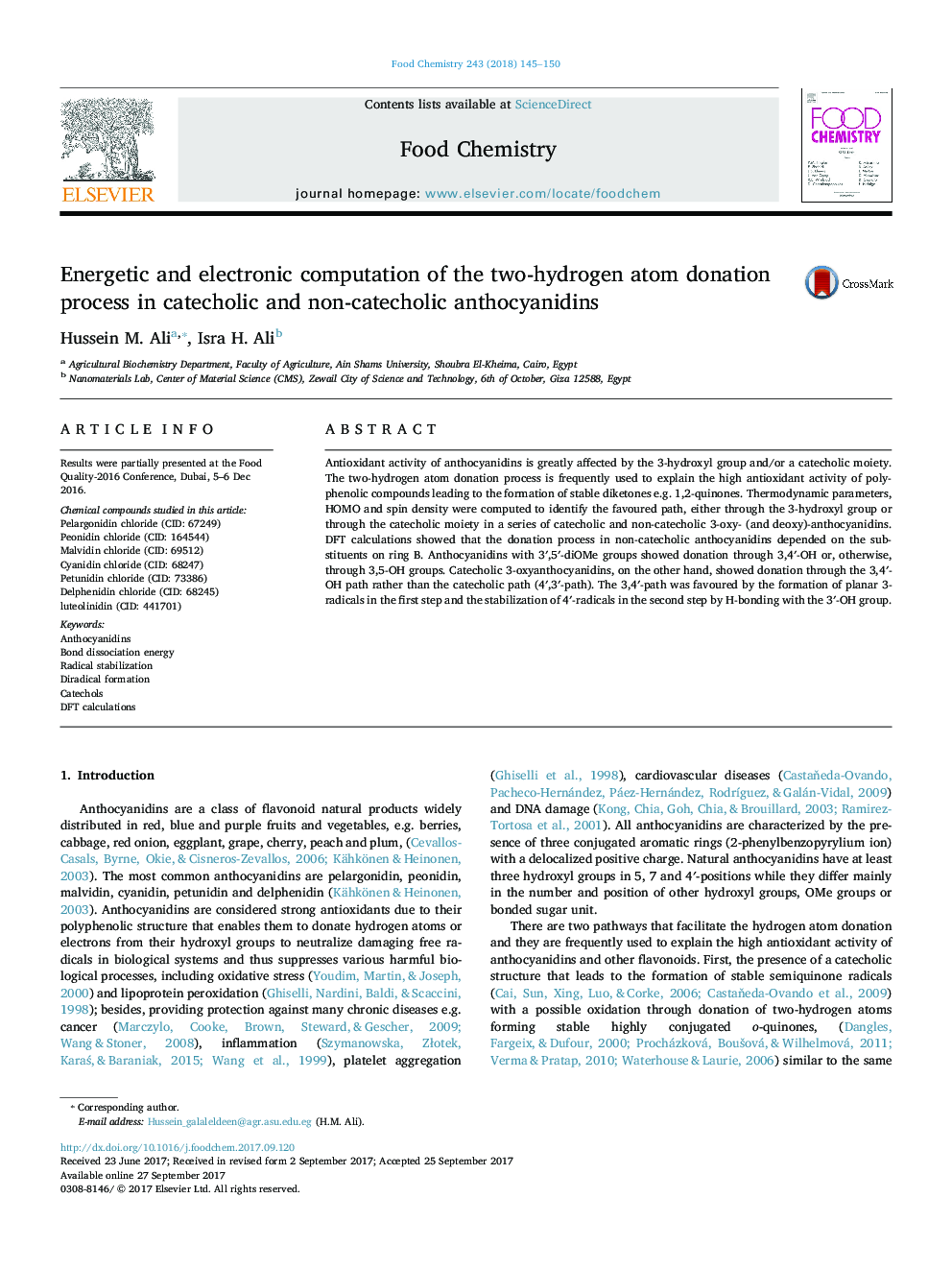| Article ID | Journal | Published Year | Pages | File Type |
|---|---|---|---|---|
| 5132539 | Food Chemistry | 2018 | 6 Pages |
â¢Energetics of the two-hydrogen atom donation process of anthocyanidins were studied.â¢Importance of catecholic vs 3-OH moieties in the antioxidant activity was elucidated.â¢In catecholic compounds, the 3,4â²-path is more favorable than catecholic path.â¢In non-catechols, 3â²- & 5â²-substituents control the path of the donation process.â¢The role of 3â²-OH is the stabilization of 4â²-radical by H-bonding not H-atom donation.
Antioxidant activity of anthocyanidins is greatly affected by the 3-hydroxyl group and/or a catecholic moiety. The two-hydrogen atom donation process is frequently used to explain the high antioxidant activity of polyphenolic compounds leading to the formation of stable diketones e.g. 1,2-quinones. Thermodynamic parameters, HOMO and spin density were computed to identify the favoured path, either through the 3-hydroxyl group or through the catecholic moiety in a series of catecholic and non-catecholic 3-oxy- (and deoxy)-anthocyanidins. DFT calculations showed that the donation process in non-catecholic anthocyanidins depended on the substituents on ring B. Anthocyanidins with 3â²,5â²-diOMe groups showed donation through 3,4â²-OH or, otherwise, through 3,5-OH groups. Catecholic 3-oxyanthocyanidins, on the other hand, showed donation through the 3,4â²-OH path rather than the catecholic path (4â²,3â²-path). The 3,4â²-path was favoured by the formation of planar 3-radicals in the first step and the stabilization of 4â²-radicals in the second step by H-bonding with the 3â²-OH group.
